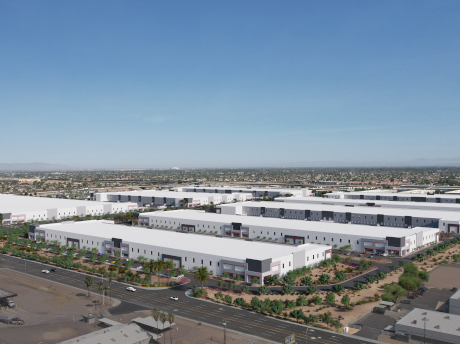By Pat Harlan, Managing Director, JLL
Labor, geography, population growth and a steady stream of cost-effective, “speed to market” solutions make Phoenix one of the most dynamic industrial markets in the country. Based on existing fundamentals, 2022 is on track to be another record year.
As of third-quarter 2021, Phoenix had landed just under 16 million square feet of net leasing year-to-date. Absorption had improved by more than 28.5 percent in the same 12-month period, to total 8.5 million square feet. Nearly 94 percent of that activity was generated from ecommerce and food and beverage users.
Vacancy had also dipped to pre-pandemic levels, falling by 100 basis points year-over-year to just 6.8 percent as of the end of the third quarter of 2021.
Construction continues to ramp up, trying to meet a seemingly unending stream of demand. As of the end of the third quarter, there was 16.6 million square feet of metro Phoenix industrial space under development. The West Valley accounts for about 11.3 million square feet of this activity. The Southeast Valley represents an additional 3.4 million square feet. Two of the largest buildings underway in the market right now are the Cubes Glendale, totaling 1.2 million square feet, and Building A of the Sarival Logistics Center, totaling more than 1.1 million square feet. Both buildings are scheduled to deliver in 2022.
These types of high-quality, speed-to-market solutions are a welcomed inventory boon, especially in light of supply chain constraints and low vacancy rates across the region. Yet as demand continues, so does the search for new areas to build.
The land along the Loop 303 in the West Valley has been popular in the past but, as developers look for more land, focus has shifted to the Buckeye area along the I-10 and to the Southeast Valley. These areas are projected to see continued interest over the next few years. These fundamentals also continue to push rental rates, which are up nearly 7 percent year-over-year (7.2 percent in the Southeast Valley and 5.2 percent in the West Valley.)
Phoenix’s expanding consumer base — to the tune of nearly 90,000 new residents annually — its low cost of doing business in comparison to other Western U.S. markets and its efficient transportation system continue to attract occupies and investors. Add to that the continued growth of ecommerce and near-shoring initiatives, and there is no end in sight for this market’s industrial strength.



